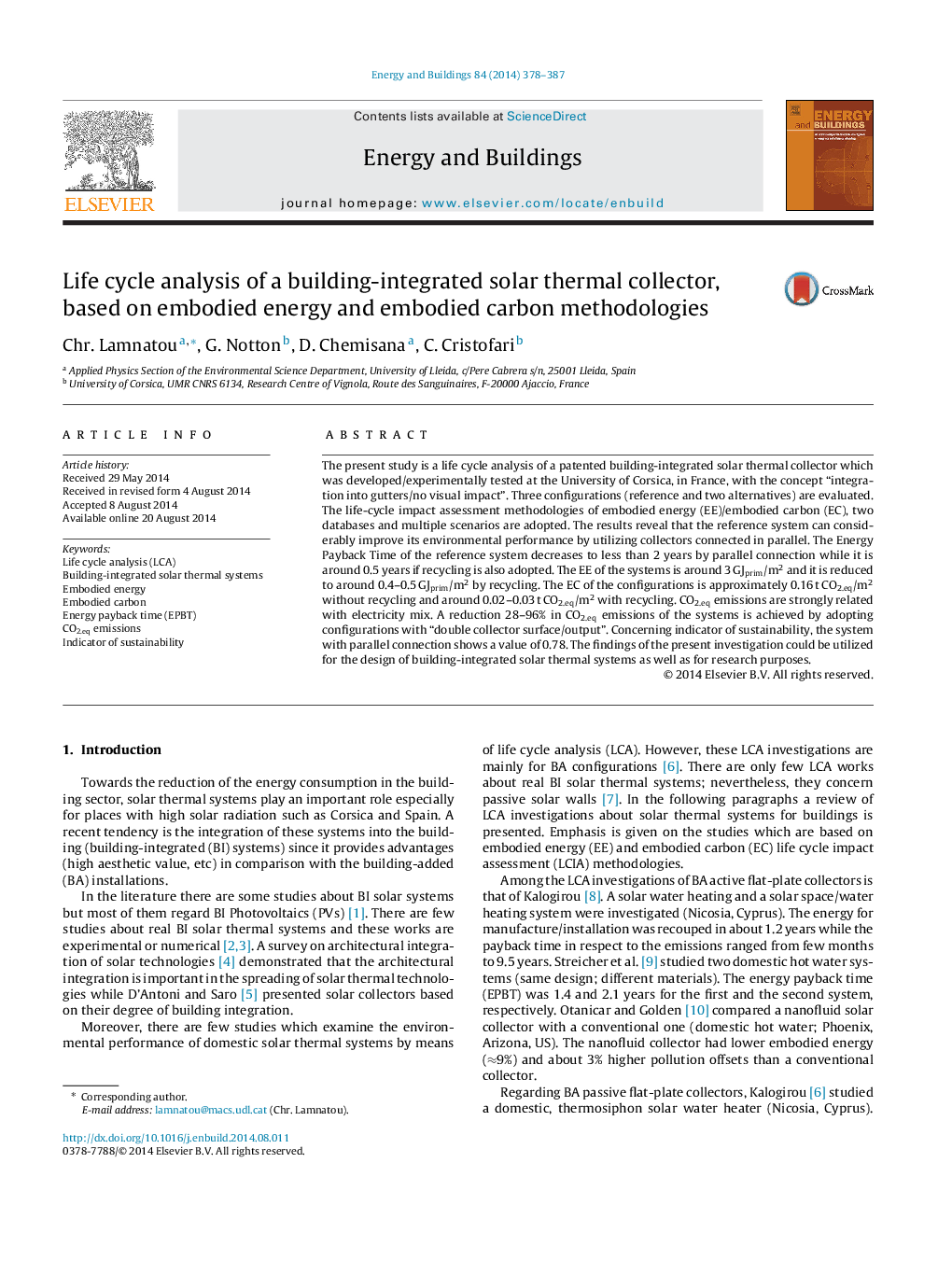| Article ID | Journal | Published Year | Pages | File Type |
|---|---|---|---|---|
| 262891 | Energy and Buildings | 2014 | 10 Pages |
•A life cycle analysis of a building-integrated solar thermal system is conducted.•The methods of embodied energy/embodied carbon and multiple scenarios are used.•Collectors connected in parallel lead to high reduction of reference system impact.•The energy payback time is less than 2 years by connecting collectors in parallel.•CO2.eq emissions are strongly related with the adopted source of electricity.
The present study is a life cycle analysis of a patented building-integrated solar thermal collector which was developed/experimentally tested at the University of Corsica, in France, with the concept “integration into gutters/no visual impact”. Three configurations (reference and two alternatives) are evaluated. The life-cycle impact assessment methodologies of embodied energy (EE)/embodied carbon (EC), two databases and multiple scenarios are adopted. The results reveal that the reference system can considerably improve its environmental performance by utilizing collectors connected in parallel. The Energy Payback Time of the reference system decreases to less than 2 years by parallel connection while it is around 0.5 years if recycling is also adopted. The EE of the systems is around 3 GJprim/m2 and it is reduced to around 0.4–0.5 GJprim/m2 by recycling. The EC of the configurations is approximately 0.16 t CO2.eq/m2 without recycling and around 0.02–0.03 t CO2.eq/m2 with recycling. CO2.eq emissions are strongly related with electricity mix. A reduction 28–96% in CO2.eq emissions of the systems is achieved by adopting configurations with “double collector surface/output”. Concerning indicator of sustainability, the system with parallel connection shows a value of 0.78. The findings of the present investigation could be utilized for the design of building-integrated solar thermal systems as well as for research purposes.
